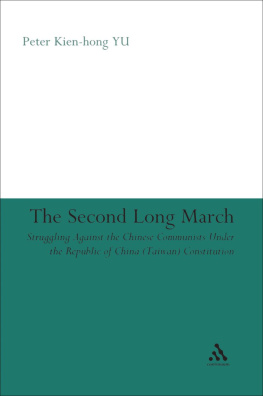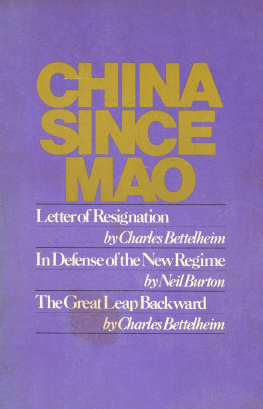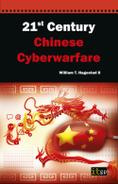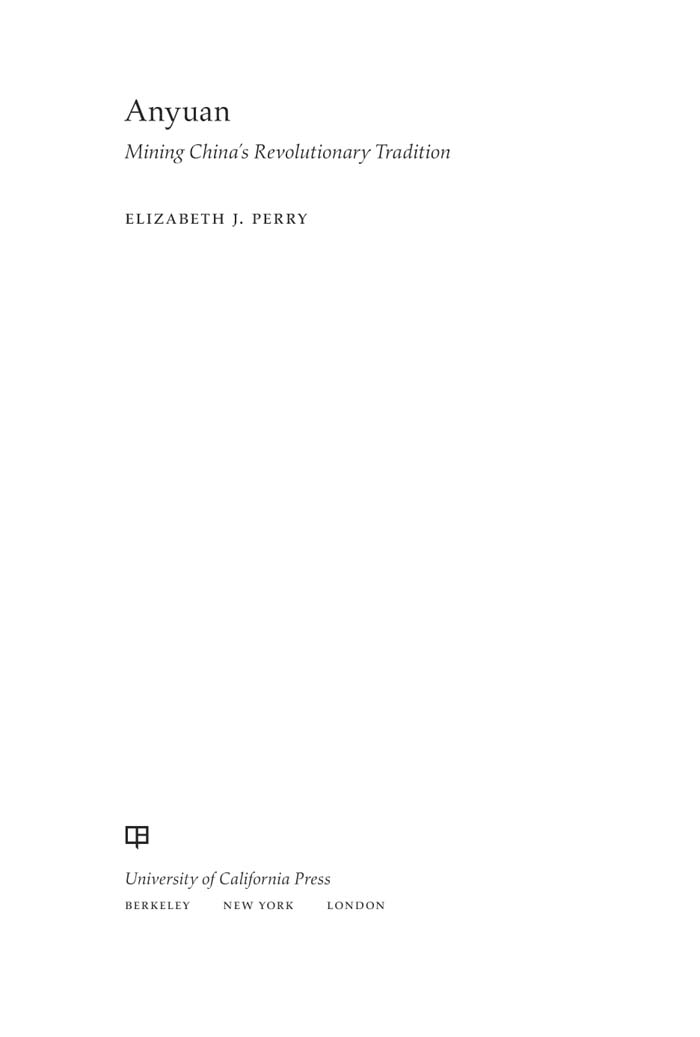
The Philip E. Lilienthal imprint honors special books in commemoration of a man whose work at University of California Press from 1954 to 1979 was marked by dedication to young authors and to high standards in the field of Asian Studies. Friends, family, authors, and foundations have together endowed the Lilienthal Fund, which enables UC Press to publish under this imprint selected books in a way that reflects the taste and judgment of a great and beloved editor.
The publisher gratefully acknowledges the generous support of the Philip E. Lilienthal Asian Studies Endowment Fund of the University of California Press Foundation, which was established by a major gift from Sally Lilienthal.
Anyuan
ASIA: LOCAL STUDIES/GLOBAL THEMES
Jeffrey N. Wasserstrom, Kren Wigen, and Hue-Tam Ho Tai, Editors
- Bicycle Citizens: The Political World of the Japanese Housewife, by Robin M. LeBlanc
- The Nanjing Massacre in History and Historiography, edited by Joshua A. Fogel
- The Country of Memory: Remaking the Past in Late Socialist Vietnam, by Hue-Tam Ho Tai
- Chinese Femininities/Chinese Masculinities: A Reader, edited by Susan Brownell and Jeffrey N. Wasserstrom
- Chinese Visions of Family and State, 1915 1953, by Susan L. Glosser
- An Artistic Exile: A Life of Feng Zikai (1898 1975), by Geremie R. Barm
- Mapping Early Modern Japan: Space, Place, and Culture in the Tokugawa Period, 1603 1868, by Marcia Yonemoto
- Republican Beijing: The City and Its Histories, by Madeleine Yue Dong
- Hygienic Modernity: Meanings of Health and Disease in Treaty-Port China, by Ruth Rogaski
- Marrow of the Nation: A History of Sport and Physical Culture in Republican China, by Andrew D. Morris
- Vicarious Language: Gender and Linguistic Modernity in Japan, by Miyako Inoue
- Japan in Print: Information and Nation in the Early Modern Period, by Mary Elizabeth Berry
- Millennial Monsters: Japanese Toys and the Global Imagination, by Anne Allison
- After the Massacre: Commemoration and Consolation in Ha My and My Lai, by Heonik Kwon
- Tears from Iron: Cultural Responses to Famine in Nineteenth-Century China, by Kathryn Edgerton-Tarpley
- Speaking to History: The Story of King Goujian in Twentieth-Century China, by Paul A. Cohen
- A Malleable Map: Geographies of Restoration in Central Japan, 1600 1912, by Kren Wigen
- Coming to Terms with the Nation: Ethnic Classification in Modern China, by Thomas S. Mullaney
- Fabricating Consumers: The Sewing Machine in Modern Japan, by Andrew Gordon
- Recreating Japanese Men, edited by Sabine Frhstck and Anne Walthall
- Selling Women: Prostitution, Markets, and the Household in Early Modern Japan, by Amy Stanley
- Imaging Disaster: Tokyo and the Visual Culture of Japans Great Earthquake of 1923, by Gennifer Weisenfeld
- Taiko Boom: Japanese Drumming in Place and Motion, by Shawn Bender
- Anyuan: Mining Chinas Revolutionary Tradition, by Elizabeth J. Perry
Anyuan
Mining Chinas Revolutionary Tradition
ELIZABETH J. PERRY

University of California Press, one of the most distinguished university presses in the United States, enriches lives around the world by advancing scholarship in the humanities, social sciences, and natural sciences. Its activities are supported by the UC Press Foundation and by philanthropic contributions from individuals and institutions. For more information, visit www.ucpress.edu.
University of California Press
Berkeley and Los Angeles, California
University of California Press, Ltd.
London, England
2012 by The Regents of the University of California
Library of Congress Cataloging-in-Publication Data
Perry, Elizabeth J.
Anyuan : mining Chinas revolutionary tradition / Elizabeth J. Perry.
p. cm. (Asia : local studies/global themes ; 24)
Includes bibliographical references and index.
ISBN 978-0-520-27189-0 (cloth, alk. paper) ISBN 978-0-520-27190-6 (pbk., alk. paper)
1. Anyuan (Jiangxi Sheng, China : West) Politics and government 20th century. 2. Anyuan (Jiangxi Sheng, China : West) Economic conditions 20th century. 3. Anyuan (Jiangxi Sheng, China : West) Social conditions 20th century.
4. Communism China Anyuan (Jiangxi Sheng : West) History 20th century. 5. Revolutions Social aspects China Anyuan (Jiangxi Sheng : West) History 20th century. 6. Political culture China Anyuan (Jiangxi Sheng : West) History 20th century. 7. Social change China Anyuan (Jiangxi Sheng : West) History 20th century. 8. Coal miners China Anyuan (Jiangxi Sheng : West) History 20th century. 9. Labor movement China Anyuan (Jiangxi Sheng : West) History 20th century. 10. Working class China Anyuan (Jiangxi Sheng : West) History 20th century. I. Title.
DS 797.57. A 698 P 47 2012
951.222 dc23
2012003939
Manufactured in the United States of America
21 20 19 18 17 16 15 14 13 12
10 9 8 7 6 5 4 3 2 1
In keeping with its commitment to support environmentally responsible and sustainable printing practices, UC Press has printed this book on 50! Enterprise, a 30% post consumer waste, recycled, de-inked fiber and processed chlorine free. It is acid-free, and meets all ANSI / NISO (Z 39.48) requirements.
For Yu Jianrong, Cai Shaoqing, and the many other
Chinese scholars who have shared so generously of
their time and knowledge
Contents
Illustrations
Acknowledgments
The origins of this book can be traced to a conversation over dinner in the winter of 2003. Having just come across Professor Yu Jianrongs impressive articles on peasant protest in rural Hunan, I invited him to Harvard to speak on his research. Over dinner at a Chinese restaurant after the lecture, Professor Yu asked if I knew why he had come to Harvard. Of course, I replied, its because I invited you here! No, he retorted, its because I want to invite you to the Anyuan coal mine! Yu Jianrong explained that he had been conducting fieldwork at Anyuan for some five years in preparation for a study of the plight of the Chinese working class. Having read my book on the Shanghai labor movement, he asked me to join him in a collaborative project. I politely but firmly demurred, noting that I was in the midst of a book project on workers militias and could not contemplate anything more. I assumed that would be the end of the story, but Professor Yu is not easily deterred. When he e-mailed from Beijing a few months later to say that all the arrangements for my forthcoming trip to Anyuan had already been made, I could no longer refuse.
My first visit to Anyuan, in July 2004, revealed the Jiangxi coal mining town to be everything that Professor Yu had promised it would be; it was a fascinating place whose complicated history exemplifies major themes of the Chinese revolutionary tradition. For someone interested in peasants as well as workers, the past as well as the present, leaders as well as followers, Anyuan has it all. I was instantly hooked. Follow-up fieldwork with Professor Yu and other Chinese colleagues in successive summers, capped by a longer stay on my own in the fall of 2009, yielded the core documentary, archival, and interview material on which this study is based. I am deeply indebted to Professor Yu Jianrong of the Chinese Academy of Social Sciences for his irresistible enthusiasm, warm friendship, keen sense of humor, and penetrating insight. Without him, this book never would have been written.









